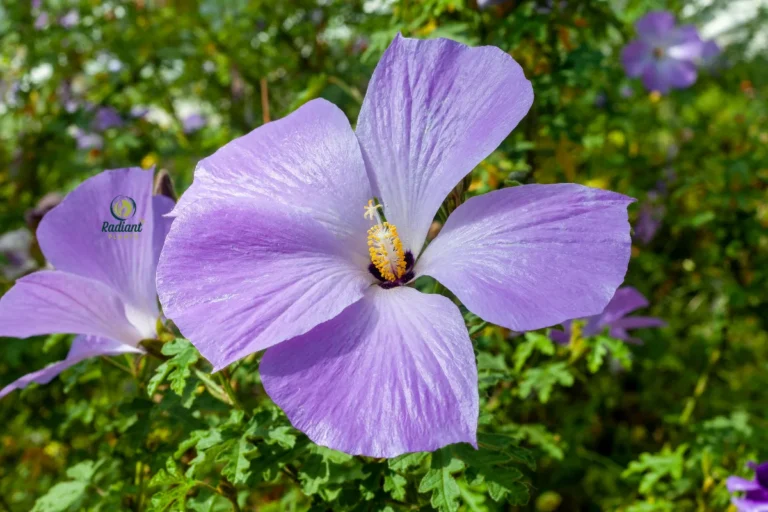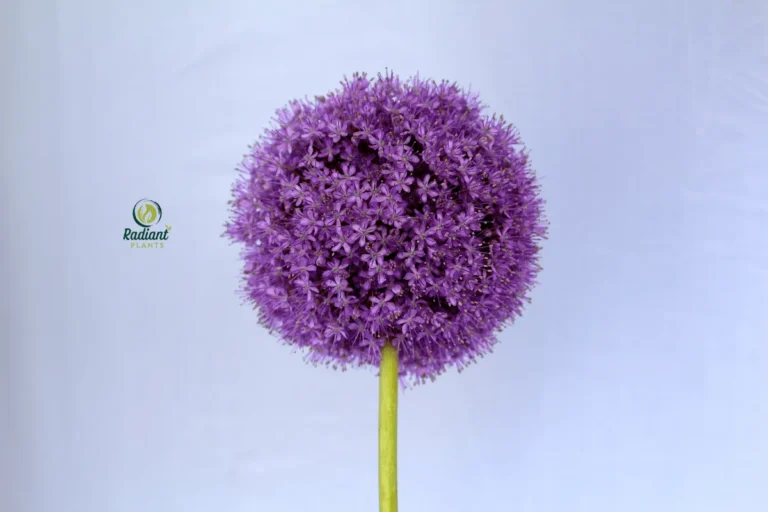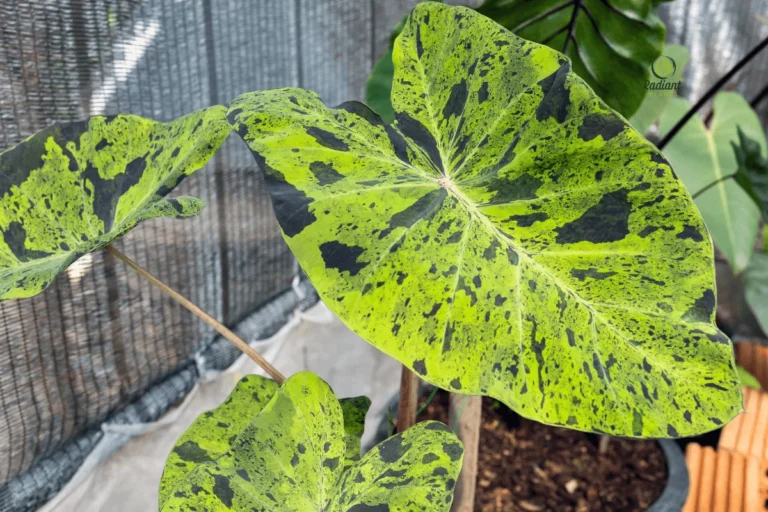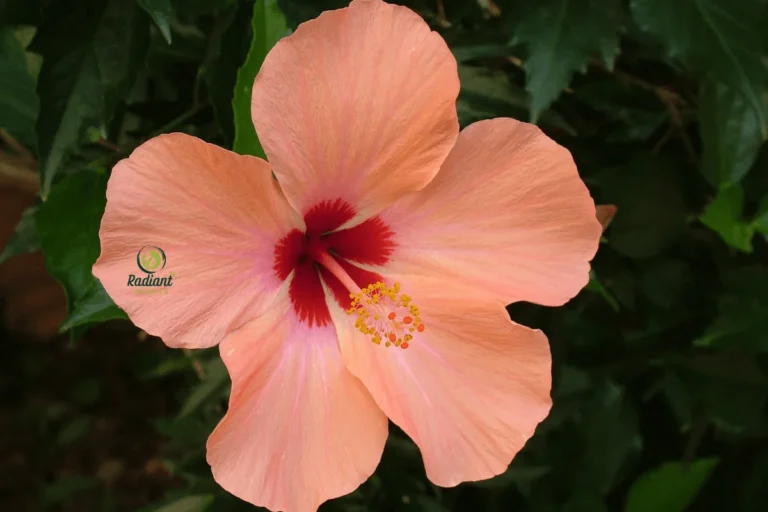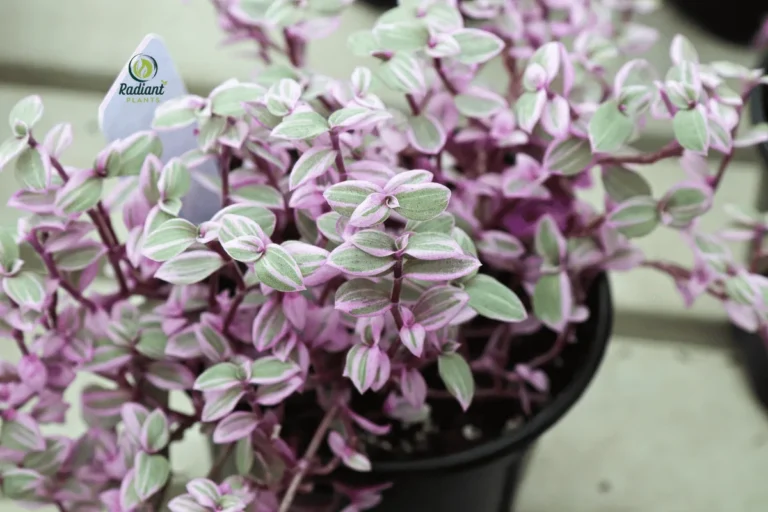Why the African Milk Tree Steals the Show
There’s something magical about the African Milk Tree—it’s bold, tall, and unapologetically unique. With its upright stems lined with tiny leaves and dramatic angles, it doesn’t just blend into the background like your average houseplant. It demands to be noticed.
Whether placed in a sunny corner or styled next to a gallery wall, the African Milk Tree adds a sculptural element to any space. Its striking silhouette and deep green coloring (often with hints of burgundy in the Rubra variety) give off major statement vibes without trying too hard.
And the best part? You don’t need to be a plant expert to enjoy its beauty. It’s a total showstopper that brings high visual impact with surprisingly little effort.
Table of Contents
Table of Contents
What Is the African Milk Tree?



Understanding Its Origins and Features
The African Milk Tree (Euphorbia trigona) is a stunning succulent native to Central and West Africa. Though it closely resembles a cactus with its tall, spiky stems and thorn-lined ridges, it actually belongs to the Euphorbia family. It’s a plant that brings drama and vertical interest to any room—without demanding much in return.
One of its most defining characteristics is the white, milky sap that gives the plant its name. While that sap is toxic and should be handled with care, it’s part of what makes the plant so resilient in nature.
Indoors, the African Milk Tree can reach impressive heights of 6 to 8 feet. Its stems grow upright, often branching out in quirky, architectural ways. Depending on the variety, you may spot variations in color, with some showcasing deep green tones and others flaunting rich burgundy hues (Rubra).
Whether you’re growing it as a statement piece or adding to your succulent collection, the African Milk Tree always brings a bold personality to the space it’s in.
Key Information About the African Milk Tree
Scientific Name | Euphorbia trigona |
Common Name | African Milk Tree |
Type | Succulent |
Native Region | Central and West Africa |
Light Needs | Bright, indirect light |
Watering | Low; drought-tolerant |
Soil Type | Well-draining succulent/cactus mix |
Toxicity | Toxic to pets and humans if ingested |
Max Height Indoors | Up to 8 feet |
Growth Rate | Fast-growing under ideal conditions |
Why the African Milk Tree Steals the Show Indoors
The African Milk Tree doesn’t just blend into the background—it owns the room. Whether you’re styling a cozy apartment or a bright studio, this plant brings bold energy without being overbearing. Here’s why it always turns heads inside the home:
Striking Looks and Sculptural Appeal
There’s no denying the African Milk Tree is a total style statement. With its tall, angular stems and geometric lines, it has an architectural look that gives modern and minimalist spaces a chic upgrade.
- Its upright growth habit creates a clean, structured silhouette
- The Rubra variety stuns with deep red and burgundy tinges along the edges
- Even in a crowd of trendy houseplants, this one demands attention
- Ideal as a dramatic focal point in corners, near windows, or as a stand-alone accent
Low Maintenance Superstar
If you love plants but don’t have a green thumb (or much time), this plant is your new best friend. The African Milk Tree practically thrives on neglect.
- Needs bright, indirect light—but can tolerate a bit of direct sun
- Watering? Just every few weeks—seriously!
- No misting or humidity fuss needed
- Great for travelers or busy plant lovers
Fast-Growing and Impressive
Unlike many slow-growers in the succulent family, the African Milk Tree is in a hurry to impress.
- Can grow several inches—or even feet—in just one growing season
- Perfect for adding vertical drama to your space
- Matures into a tall, branching plant with a commanding presence
- An ideal choice if you want big visual payoff without years of waiting
How to Care for the African Milk Tree
The African Milk Tree is one of those rare gems that looks like a high-maintenance diva but is actually super chill when it comes to care. Whether you’re a seasoned plant parent or just starting out, this beauty won’t give you much trouble. Here’s everything you need to know to keep your African Milk Tree happy and thriving.
Light Requirements
Light is the secret to a thriving African Milk Tree. This plant loves sunshine and needs plenty of it to grow tall and strong.
- Best location: Near a bright window with lots of indirect sunlight
- Direct sun: Can tolerate a few hours of direct morning or late afternoon sun, but harsh midday rays can scorch its skin
- Signs of too little light: Slow growth, pale color, or leaf drop
- Supplement with grow lights: If you’re in a low-light home or dealing with dark winters, a grow light can keep your plant healthy year-round
💡 Tip: Rotate the pot every few weeks to keep it growing upright and even.
Watering Schedule
African Milk Trees are drought-tolerant and sensitive to overwatering, so keeping a light hand with the watering can is key.
- Watering frequency: Every 2–3 weeks in spring and summer
- Winter watering: Cut back to once a month or even less
- Soil check: Let the top 2–3 inches of soil dry out completely before watering again
- Drainage: Always use a pot with a drainage hole to prevent root rot
- Warning sign: Yellowing or mushy stems mean it’s getting too much water
💧 Pro tip: When in doubt, wait a few more days. This plant prefers dry roots over soggy ones.
Soil and Potting
Well-draining soil is non-negotiable for the African Milk Tree. It needs a dry, airy mix that mimics its natural environment.
- Best soil mix: Cactus or succulent potting soil
- Optional blend: Mix regular potting soil with perlite or coarse sand (50/50 ratio)
- Repotting: Every 2–3 years or when roots outgrow the pot
- Pot size: Go one size up—don’t over-pot, or the soil will retain too much moisture
🌿 Heads up: Use gloves when repotting—its milky sap can irritate your skin.
Temperature and Humidity
Native to warm African climates, this plant loves cozy indoor temperatures and doesn’t need extra humidity.
- Ideal indoor temps: 65–85°F (18–29°C)
- Too cold: Avoid placing it in rooms that drop below 50°F (10°C)
- Keep away from: Drafty windows, air conditioners, and heaters
- Humidity needs: Average home humidity is perfect—no misting required
🔥 Bonus: It thrives in dry air, making it an ideal plant for arid or heated homes.
Fertilizing Tips
Although the African Milk Tree isn’t a heavy feeder, a little boost during the growing season helps it stay lush and strong.
- When to feed: Once a month during spring and summer
- Fertilizer type: Balanced liquid fertilizer for succulents or cacti
- Dilution: Always dilute to half strength to avoid overfeeding
- No need: Skip fertilizing during fall and winter when the plant slows down
🌱 Extra love: Fertilizing regularly can encourage fuller growth and vibrant color.
Quick Care Overview
Care Aspect | What It Needs |
|---|---|
Light | Bright, indirect light (some direct sun is OK) |
Watering | Every 2–3 weeks in warm months, less in winter |
Soil | Fast-draining succulent or cactus mix |
Temperature | 65–85°F (18–29°C); avoid cold drafts |
Humidity | Low to average; no extra humidity needed |
Fertilizing | Monthly during spring/summer with diluted feed |
Repotting | Every 2–3 years or when roots outgrow the pot |
Toxicity | Toxic sap; keep away from pets and children |
Styling Your Space with the African Milk Tree
The African Milk Tree isn’t just a houseplant—it’s a design statement. With its sculptural form and striking color, it can transform any space from simple to stunning. Whether you’re into clean minimalism or bold boho vibes, this plant fits right in and steals the spotlight.
Statement Plant for Minimalist Interiors
In sleek, neutral-toned rooms, the African Milk Tree adds architectural drama without clutter.
- Use a modern planter in matte black or white to highlight its vertical lines
- Place it in corners to draw the eye upward and make the room feel taller
- Pair with soft textures—like throws or rugs—for cozy contrast
🌿 Try this: A tall milk tree beside a reading chair adds calm energy to your reading nook.
Boho Vibes and Eclectic Energy
Love a more colorful, layered space? The African Milk Tree brings just the right amount of edge.
- Combine with woven baskets, patterned textiles, and vintage finds
- Group with trailing plants like pothos or string of hearts for a lush effect
- Choose a clay or terracotta pot for that natural, earthy touch
🎨 Design tip: Use the red-tinged ‘Rubra’ variety to echo warm tones in your decor.
Brighten Up Workspaces and Studios
Need a boost in your home office or creative corner? This plant adds life and focus.
- Position near your desk for a productivity-friendly pop of green
- Great in sunny studios or workspaces with lots of natural light
- Its upright shape means it won’t sprawl or take over your space
💡 Bonus: Greenery can improve concentration and reduce stress—your Milk Tree is doing double duty!
Balcony or Indoor Garden Feature
If you’ve got an enclosed balcony, sunroom, or plant corner, the African Milk Tree thrives and shines.
- Looks amazing paired with other succulents and cacti for a desert-inspired display
- Use pots of varying heights to create dimension
- Place near a window that gets strong filtered light
🌞 Outdoor styling: During warm months, let it summer outside in filtered sunlight (just bring it in before temps drop).
Styling Quick Tips
Styling Idea | Why It Works |
|---|---|
Tall decorative planter | Adds height and elegance |
Group with small plants | Creates visual contrast and interest |
Use in bright corners | Fills awkward spaces beautifully |
Mix textures and materials | Enhances the plant’s bold structure |
Rotate every few weeks | Keeps growth even and plant upright |
Fun Facts That Make It Even Cooler
The African Milk Tree isn’t just eye-catching—it’s full of personality and surprises. Whether you’re a new plant parent or a seasoned collector, this unique succulent has a few secrets that make it one of the coolest plants to grow. Here’s what makes it truly unforgettable.
Why Plant Collectors Love It
Plant lovers are always on the lookout for something special—and the African Milk Tree checks all the boxes.
- Rare Varieties Steal Hearts
The vibrant Euphorbia trigona ‘Rubra’ is a favorite among collectors. Its rich burgundy-red hue makes it stand out in any collection. - Instagram Gold
With its sculptural shape and bold color, it’s a favorite subject for plant photography. Just one post featuring this beauty can light up your feed. - A Lifetime Plant
With minimal care and the right conditions, the African Milk Tree can live for decades—growing taller and more majestic year after year. - Low Drama, High Impact
Unlike many fussy houseplants, it thrives with very little attention. It’s the perfect combo of striking looks and chill vibes. - A Living Sculpture
Its upright, triangular stems and small spines give it an architectural, almost otherworldly appearance—like modern art in plant form.
🪴 Plant collector tip: Place it among trailing vines or bushier plants to create dynamic height and contrast in your plant display.
5 Quick Facts About the African Milk Tree
Ready to impress your friends with your plant trivia? These fun facts will make you appreciate your African Milk Tree even more:
- Not a Cactus
Despite its cactus-like looks, it’s a succulent from the Euphorbia family. That means it stores water but doesn’t have true cactus traits. - Sky-High Growth
When it’s happy, it grows fast—up to 2–3 feet per year indoors! Great for filling vertical space in any room. - Red Alert
The ‘Rubra’ variety turns deep shades of red and burgundy in bright light—perfect for anyone who loves dramatic foliage. - Handle with Care
It produces a milky white sap when cut or broken. This sap can be irritating to skin and toxic if ingested—so gloves are a good idea! - A Natural Air Cleaner
Like many houseplants, it can help improve air quality by absorbing toxins and releasing oxygen. Bonus: it looks good doing it.
Table: Fun Fact Summary
Fact | What Makes It Cool |
|---|---|
Not a cactus | It’s a succulent that just looks cactus-like |
Grows super fast | Can grow up to 3 feet in a year |
Comes in red (Rubra) | Striking red variety for dramatic flair |
Milky sap is toxic | Handle with gloves and keep away from pets |
Purifies indoor air | Boosts oxygen and removes toxins |
FAQs About the African Milk Tree
Curious about the African Milk Tree and how to keep it happy? These frequently asked questions cover everything from growth tips to safety concerns—so you can grow yours with confidence.
Is the African Milk Tree easy to care for?
Yes, it’s one of the easiest houseplants to care for! It thrives on neglect, doesn’t need frequent watering, and adapts well to indoor environments with bright light.
How often should I water my African Milk Tree?
Water every 2–3 weeks during the growing season (spring and summer). Let the soil dry out completely between waterings. In winter, reduce watering to once a month or less.
Does the African Milk Tree need direct sunlight?
It prefers bright, indirect sunlight, but it can tolerate some direct morning sun. Avoid harsh afternoon rays, which can scorch the stems.
Can the African Milk Tree grow outdoors?
Yes, in warm climates (USDA Zones 10–11), it can grow outdoors year-round. In cooler zones, it’s best grown indoors or moved outside only during warm months.
Is the African Milk Tree toxic to pets or children?
Yes, it is toxic if ingested and its sap can irritate the skin or eyes. Keep it out of reach of pets and children, and always wear gloves when handling or pruning.
How tall can the African Milk Tree get?
Indoors, it can grow up to 6–8 feet tall with the right care. Outdoors in ideal conditions, it can reach even greater heights.
Why is my African Milk Tree leaning or bending?
This usually happens when it’s not getting enough light. Rotate your plant regularly and move it closer to a bright window to encourage even growth.
Can I propagate the African Milk Tree?
Yes! Propagation is easy using stem cuttings. Always let the cutting callous over for a few days, then plant in dry, well-draining soil.
What’s the difference between Euphorbia trigona and a cactus?
Although it looks like a cactus, Euphorbia trigona (African Milk Tree) is actually a succulent. The main difference is in their internal structure and the sap—Euphorbia has milky latex, while cacti do not.
Conclusion: Let the African Milk Tree Steal the Show in Your Home
With its bold structure, low-maintenance lifestyle, and surprisingly fast growth, the African Milk Tree isn’t just another houseplant—it’s a statement piece. Whether you’re styling a modern loft, brightening up a cozy corner, or curating an Instagram-worthy plant shelf, this striking succulent brings the drama without the fuss.
It’s easy to care for, full of personality, and impossible to ignore—which is exactly why it continues to win hearts around the world. If you’re ready for a plant that turns heads and fits effortlessly into your routine, the African Milk Tree just might be your perfect green companion.
🌿 Add one to your collection, and let the show begin.
Euphorbia Trigona (African Milk Tree) Care Guide and Growing Tips


